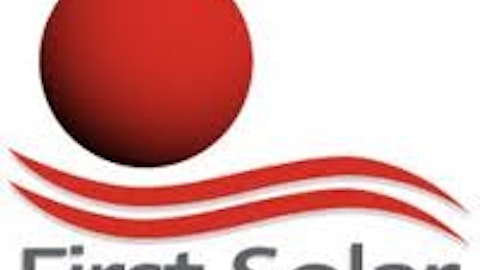Network security is becoming one of the top concerns for industries all across the world. The internet has accelerated the threat from malicious content, which is affecting operating systems, hardware, software, mobile devices, data centers, etc. This has prompted businesses to secure and boost their network security. I have analyzed Palo Alto Networks Inc (NYSE:PANW), Juniper Networks, Inc. (NYSE:JNPR), and Cisco Systems, Inc. (NASDAQ:CSCO) in the network security segment. Let’s see how they are doing.
Strongly positioned with security solutions
Palo Alto Networks Inc (NYSE:PANW) is a leading provider of network security solutions. Its Next-Generation Firewalls, or NGFWs, perform multiple network security functions on the firewall, rather than on separate devices behind the firewall. This makes the network platform inherently threat-proof. Its newly-launched WildFire is a step into NGFW. Wildfire is the only advanced malware solution that offers traditional malware detection, sandbox-based malware detection, anti-malware signature generation, IPS signature generation, DNS signature generation, and malware URL list generation all on the same network platform. This gives tough competition to standalone APT vendor FireEye and FireAMP, from IPS vendor Sourcefire.
After its launch, WildFire now has more than 1300 customers (out of the global customer base of 11,000), analyzing more than 500,000 files per month. The WildFire APT, or advanced persistent threat solution, subscription service protects against malware by leveraging the cloud for computing power, scalability, and timeliness of updates. As an add-on service, Wildfire costs customers 20% of the base $75,000, or $15,000. The company will gain $19.8 million of revenue every year from the subscription fees.
Though the company is a new entrant in the firewall market, it is rapidly gaining firewall share next to its competitors. The company won 75% of new deals in 2013, where it was selected as the primary firewall.
Palo Alto Networks Inc (NYSE:PANW)’s other attraction is its huge customer base, which is evidenced by the repeat customer purchasing metric. This shows how many purchases have been made after the initial purchase. On average, customers making purchases after the initial purchase are spending around 4.5 times the initial purchase. Its top 25 customers’ repetitive purchases are 11.4 times the initial purchase, up from 9.9 times in second-quarter 2013.
Currently, around 10% of internet connections are secured using NGFWs. By the end of 2014, this will rise to 35% of the installed base, with 60% of new purchases being NGFWs. With the rapid pace of global growth in NGFWs, Palo Alto Networks Inc (NYSE:PANW) has a huge potential to further solidify its presence in this market.
Fragile security segment
Juniper Networks, Inc. (NYSE:JNPR) posted mixed results in the first quarter of 2013. The point of concern is the network security segment. Since 2011, security sales in Juniper’s Software Solutions Division, or SSD, were flat, which includes products like the SRX line and ScreenOS firewalls. In this quarter, Juniper Networks, Inc. (NYSE:JNPR)’s security software sales fell $32 million, or 19% year over year, to $136.7 million. The service provider segment contributed $20 million to the decline due to high-end SRX. The enterprise segment contributed the remaining $12 million of the decline, as the ScreenOS product declined more rapidly than the growth of SRX.
In enterprise segment, SRX products continued to handle a large number of concurrent sessions, which differentiates Juniper in the service provider LTE deployments. But in the case of the service segment, SRX products are in the middle of a product transition, as the company is making a new generation of service play. When the transition is over, SRX’s session capacity will increase to 100 million sessions.
The company is trying to improve its enterprise firewalls with its next-generation security products, fortified by Junos Spotlight Secure, which includes two products — Junos WebApp Secure, or JWAS, and Juniper Networks (NYSE:JNPR) SRX Series Services Gateways. The Spotlight Secure provides users greater intelligence about attackers, threats, and individual devices and then spreads that intelligence across various network and security products.
However, Gartner does not assess Juniper Networks, Inc. (NYSE:JNPR) as having a highly compelling security vision in comparison to well-known competitors. Its JWAS technology is not effective in competing with the NGFW leaders like Palo Alto and Check Point. Gartner rarely sees Juniper considered on shortlists that are considered by customers looking for an NGFW.
Overall, Juniper Networks, Inc. (NYSE:JNPR)’s present enterprise segment has had flat year over year performance. A lot of the challenges come from the weak public sector, lesser federal spending of the U.S., and weakness in financial services. This is not going to improve in the near term, which will negatively affect Juniper.
A leader will always remain a leader
Cisco Systems, Inc. (NASDAQ:CSCO) reported strong results in the third quarter of 2013. Though it had reported weakness in its security segment, it is still leading the network security market. Sales of security products were down 4% at $327 million due to weakness in content security, which was partly offset by stability and network security. Cisco Systems, Inc. (NASDAQ:CSCO) continues to lead the overall security appliance market with a 15.5% share in factory revenue for the fourth quarter of 2012, as reported by IDC.
In an effort to further uplift its security business, Cisco acquired Cognitive Security this year, which provides artificial intelligence techniques to detect advanced cyber threats. The acquisition is expected to give benefits from the second half of 2013.
Cisco has lost around 10% of its market share in network security over the past five years to Juniper Networks, Checkpoint Systems, and Palo Alto Networks (NYSE:PANW). Cisco Systems, Inc. (NASDAQ:CSCO) is hoping to cover this loss by gaining a reasonably early start in software defined networking, or SDN. Cisco sees SDN as an opportunity to open the value of $180 billion worth of its installed hardware and to double its software revenue in the next five years by developing APIs, or application programming interfaces. These APIs will work for network programmability. Cisco’s SDN fixes virtualized services to hardware across access networks, clouds, and wide area networks.
The SDN enhances security in three ways. First, it makes the network more threat-proof. Second, it can quickly act on advanced threats no matter where they are in the network or the data center. Third, security can now be built into the network. SDN will bring security services closer to the applications and allow making decisions at an initial level. According to IDC forecast, the SDN market will be worth $360 million in 2013, and by 2016 it will grow to $3.7 billion. This will give Cisco extra benefits in revenue from SDN in coming years.
Cisco Systems, Inc. (NASDAQ:CSCO) is also a leader in the $1.2 billion secure web gateways, or SWGs, market. SWGs use URL filtering, malware detection, and application control technology to protect organizations and impose internet policy compliance. The combined SWG revenue in 2012 was $1.18 billion, which grew approximately 15% over 2011. The market for secure web gateways increased 15% year over year in 2012, and IDC forecasts that this market will further grow 13% to 15% in 2013, fueled by the increase in cyber threats targeting enterprises.

Source: Gartner, May 2013
Investors’ take
To sum up, I recommend buying both Palo Alto Networks Inc (NYSE:PANW) and Cisco for long-term growth.
Palo Alto Network is strongly positioned in the network security segment, more so than Juniper Networks, Inc. (NYSE:JNPR) and Cisco, via its NGWF product WildFire.
Cisco Systems, Inc. (NASDAQ:CSCO) has reported a decline in its security segment, but its continuous improving efforts in the network security market, SWGs, and its SDN investment makes this stock favorable for your portfolio.
However, I am cautious about the future prospects of Juniper. The continuous weakness in the U.S. federal spending and financial services will challenge its enterprise vertical. I recommend investors put this stock on hold.
The article What’s Going On With These Tech Companies? originally appeared on Fool.com and is written by Ranu Devi.
Ranu Devi has no position in any stocks mentioned. The Motley Fool recommends Cisco Systems. Ranu is a member of The Motley Fool Blog Network — entries represent the personal opinion of the blogger and are not formally edited.
Copyright © 1995 – 2013 The Motley Fool, LLC. All rights reserved. The Motley Fool has a disclosure policy.






